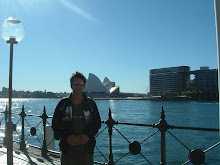Twitter however appears to me to be a complex world of friendships, allegiances, cliques. Socialisers, broadcasters and spammers all have different agenda's concerning their use of Twitter.
Socialisers use Twitter to:
- Locate people they don't yet know, who can add something to their Twitter profile. It may be that being seen to follow a certain person gives you kudos or it may be that you actually want to keep up to date with what someone of interest is doing.
- Engage with existing friends, colleagues and acquaintances on another level. Twitter allows you to keep abreast of what colleagues out of the office are dong or it allows you to see what friends did at the weekend.
- Share information. Third party Twitter apps are facilitating easier sharing. Applications such as Twitpic for photos and URL shorteners like Tweetdeck's bit.ly allow for quick link sharing. Who needs social bookmarking sites these days when Twitter allows you to catalogue your favourite links in the favourites folder and share your favourites via your status update? People can show their interest by retweeting (surely this is the same as 'digging' something?)
Broadcasters use Twitter to:
- Disseminate a message to a large number of people. The people have to 'follow' the broadcaster and so must therefore have some kind of interest in what they have to say. Examples of broadcasters are; @bbcnews @google @twitter. They have an asymetric stream of information and tend not to interact with followers but more act like an information source (replacing RSS feeds?)
Spammers use it to:
- Spam! They follow everyone and hope that they will be followed. They can be following tens of thousands of people. Twitter admin do not like Spammers and they very often have their account removed.
The above profiles are the norm but are not mutually exclusive. Many celebrities broadcast what they ate for lunch to a large number of people but then interact with them on a social level, albeit humouring their fans.
There does appear to be a social hierarchy within Twitter which bears a relation to the number of followers a user has. If their followers to followees ratio is high i.e. Following 100 with 9000 followers then they are high up the Twitter hierarchy. Offline influence can very much affect your social standing within Twitter.
Below is a list of what I believe the social structure of Twitter to be:
1. World leaders eg (@barackobama)
2. Real celebrities - huge stars in the real world eg (Ashton Kutcher @aplusk, Lance Armstrong)
3. Early adopter celebrities - not so well known in the real world but well followed on Twitter (Stephen Fry, Russell Brand, Phillip Schofield)
4. Key influencers/bloggers etc (Seth Godin, Robert Scoble)
5. Journalists for major broadcasters online and offline (@jemimakiss -Guardian Rory Celan Jones @ruskin147 -BBC tech
6. Business leaders/key figures within organisations (@emilybell -Guardian
6. Smaller scale bloggers and journalists -
7. Civilians - You and me @rob__murray @joebloggs
social media blog









No comments:
Post a Comment